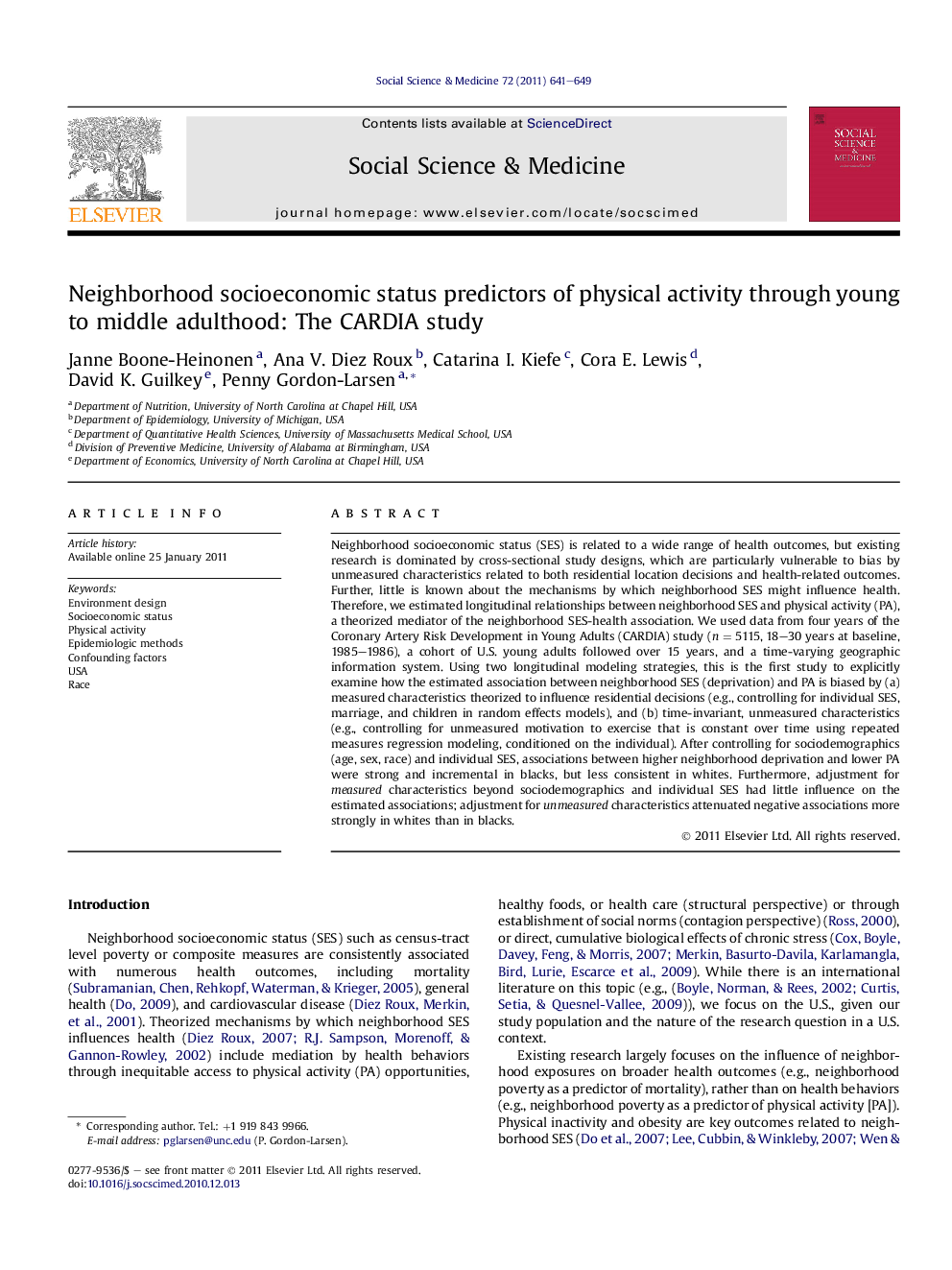| کد مقاله | کد نشریه | سال انتشار | مقاله انگلیسی | نسخه تمام متن |
|---|---|---|---|---|
| 952978 | 927560 | 2011 | 9 صفحه PDF | دانلود رایگان |

Neighborhood socioeconomic status (SES) is related to a wide range of health outcomes, but existing research is dominated by cross-sectional study designs, which are particularly vulnerable to bias by unmeasured characteristics related to both residential location decisions and health-related outcomes. Further, little is known about the mechanisms by which neighborhood SES might influence health. Therefore, we estimated longitudinal relationships between neighborhood SES and physical activity (PA), a theorized mediator of the neighborhood SES-health association. We used data from four years of the Coronary Artery Risk Development in Young Adults (CARDIA) study (n = 5115, 18–30 years at baseline, 1985–1986), a cohort of U.S. young adults followed over 15 years, and a time-varying geographic information system. Using two longitudinal modeling strategies, this is the first study to explicitly examine how the estimated association between neighborhood SES (deprivation) and PA is biased by (a) measured characteristics theorized to influence residential decisions (e.g., controlling for individual SES, marriage, and children in random effects models), and (b) time-invariant, unmeasured characteristics (e.g., controlling for unmeasured motivation to exercise that is constant over time using repeated measures regression modeling, conditioned on the individual). After controlling for sociodemographics (age, sex, race) and individual SES, associations between higher neighborhood deprivation and lower PA were strong and incremental in blacks, but less consistent in whites. Furthermore, adjustment for measured characteristics beyond sociodemographics and individual SES had little influence on the estimated associations; adjustment for unmeasured characteristics attenuated negative associations more strongly in whites than in blacks.
Research highlights
► Individuals living in deprived neighborhoods in the USA more often have poor health, suggesting neighborhood conditions may influence health.
► However, such relationships could arise because certain individual attributes influence both health-related behavior and also residential location.
► Our longitudinal analysis addresses whether individual characteristics are related to both selection of neighborhoods and individual health behaviors.
► We find that among U.S. black survey respondents, physical activity declined with increased neighborhood deprivation.
► Findings suggest that neighborhood deprivation may influence health by limiting physical activity of residents.
Journal: Social Science & Medicine - Volume 72, Issue 5, March 2011, Pages 641–649